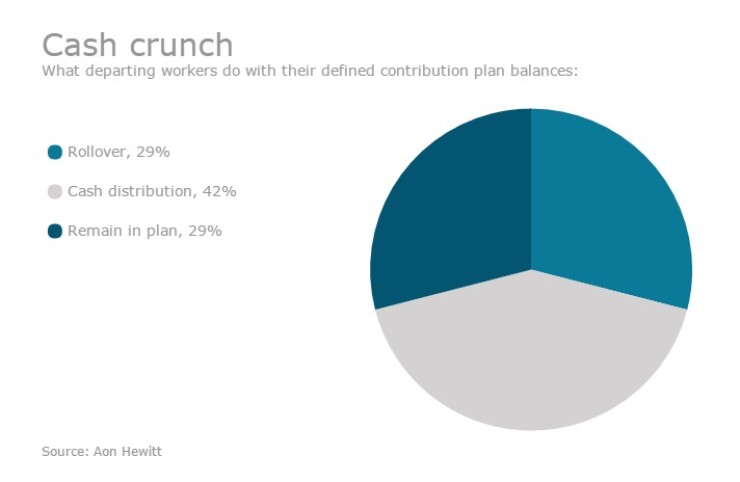Hey, plan sponsors: Imagine for a moment that your active participants are Tom Cruise from “Mission: Impossible” (or Barbara Bain, Peter Graves and Martin Landau, for those of us who remember the classic TV series).
The mission that you present to participants, should they choose to accept it, is to review their plan investments and make adjustments as necessary on a quarterly basis, along with reviewing plan summaries and making necessary updates on an annual basis.
Each quarterly and annual communication you send to participants typically comes with a laundry list of tasks. The to-do list for participants includes:
Checking for changes to plan fees
Analyzing investment performance and deciding whether or not to maintain asset allocation
Gauging progress toward retirement income targets
Making adjustments to maximize employer matches and escalate deferrals
Checking for new plan provisions
Updating contact details if they have moved
How many of your active plan participants can you rely on to complete this full to-do list once a year? Very few — and even fewer can be expected do so once a quarter.
If completion of this challenge is a “Mission: Improbable” for active plan participants, it’s even tougher for inactive or terminated plan participants. If most participants are unlikely to do all that their current employer plans ask of them, they’re even less likely to regularly review the 401(k) savings accounts and IRAs they left behind in prior employer plans.
See also:
The Employee Benefit Research Institute estimates that the average American will change jobs more than seven times during their working life. Do you really think a participant with seven or more retirement savings accounts is going to review them all on an annual basis?

And since most active and inactive participants can’t be expected to perform all the tasks related to plan review even once a year, how can they be expected to do so every quarter?
Contrary to what some might think, plan participants don’t have unlimited time to perform a proper checkup of their retirement savings accounts. Participants also perceive retirement-related tasks as very time consuming, and to them, time is money.
For example, Boston Research Technologies’ “Manual Portability and the Mobile Workforce” 2015 study found that, on average, participants anticipate that consolidating a retirement account in their current 401(k) plan will require them to give up 19 hours of personal time. The study reported that 36% of participants value the personal time they would have to allocate to completing a roll-in at between $100 and $500, and 8% value those hours anywhere from $1,000 to $5,000.
Annual and quarterly account checkups are a “Mission: Improbable” for participants because they measure the personal time they devote to managing retirement savings by dollars as well as hours. But sponsors can strengthen engagement with participants and make what they ask of participants on an annual or quarterly basis less of an improbable mission. This can be done by offering roll-in services that encourage account consolidation at the time of a job change, thus maintaining all their retirement savings in their current active 401(k) plan, where they are more likely to be attentive and vigilant.
See also:
Given the expensive and time-consuming nature of the roll-in process for participants, is it any wonder that the mobile workforce behavior study found that 32.8% of participants have stranded a savings account in a prior-employer plan at least once in their working lives? When sponsors, either on their own or with help from a roll-in service provider, make it easy and inexpensive for participants to transport their retirement savings into and out of their plans, they increase the likelihood that current employees will consolidate balances from former-employer plans into their accounts, terminated employees will take their savings with them when they leave, and all employees hold onto their retirement savings and not cash out.
Establishing seamless plan-to-plan portability — and auto portability for participants with account balances of less than $5,000 — is a win-win for both sponsors and participants. Sponsors can decrease the small, stranded accounts in their plans, thereby improving their average account balances, and participants can save more for retirement.
Some plan sponsors, though, are hesitant to encourage savings portability because they fear that the loss of small, stranded accounts will greatly diminish their plans’ overall assets. But this is a misguided notion.
First, the primary metric measuring a defined contribution plan’s health is average account balance, not total assets.
Second, a plan’s total assets can grow significantly when the majority of its participants consolidate their multiple retirement account balances in their active employer plan. Discouraging cash-outs will also lead to larger asset balances and long-term financial health.
Third, instead of focusing too much on the stranded account assets they would lose in the short-term, sponsors should think about the bigger picture. It’s not uncommon today to find defined contribution plans in which one-third of all participants are terminated employees.
If sponsors know many of their participants are not properly monitoring their accounts because they have stranded them, wouldn’t they be better off, as fiduciaries, to engage with these participants and encourage them to move their balances into their current employer plans?
See also:
Furthermore, sponsors are now subject to stronger penalties for failure to properly maintain records or provide reports to former participants and beneficiaries under the Federal Civil Monetary Penalties Inflation Adjustment Act Improvements Act of 2015. This makes finding lost and missing participants, and encouraging them to consolidate their accounts into their current-employer plans, even more important for sponsors. Fortunately, roll-in service providers can offer sponsors assistance with locating lost and missing participants.
Getting participants to regularly check the status of their accounts and investments is a “Mission: Improbable” for those with only one account, so it’s even more difficult for those participants with multiple accounts. But sponsors can make engagement with participants more of a “Mission: Probable” by proactively encouraging them to consolidate their accounts and facilitating plan-to-plan portability.





